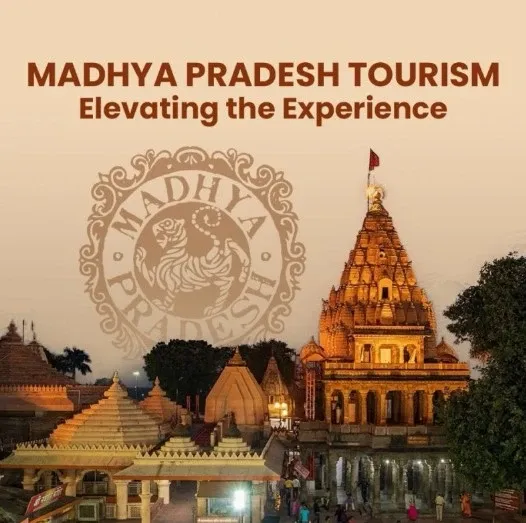How is Madhya Pradesh Becoming the Heart of Global Tourism?

Synopsis
Key Takeaways
- Madhya Pradesh welcomed 134.1 million tourists in 2024.
- The state is rich in both spiritual and adventure tourism.
- Madhya Pradesh is home to three UNESCO World Heritage Sites.
- The new Tourism Policy 2025 aims to attract significant investment.
- Madhya Pradesh has a vibrant cultural identity recognized nationally.
Jaipur, July 19 (NationPress) Madhya Pradesh, known for its breathtaking landscapes, holy rivers, rich culture, and exceptional heritage, is transcending its identity as the 'Heart of India' to emerge as the epicenter of global tourism.
This revelation was made clear during the Madhya Pradesh Tourism Board's roadshow at the prestigious Jai Mahal Hotel in Jaipur last Friday.
Addressing an engaged audience of tourism professionals, filmmakers, and hospitality experts from both Rajasthan and Madhya Pradesh, Bidisha Mukherjee, the Additional Managing Director of the Madhya Pradesh Tourism Board, emphasized the state's increasing allure.
In 2024, Madhya Pradesh attracted an impressive 134.1 million tourists, with 70 million seeking religious and spiritual journeys to destinations like Mahakaleshwar and Omkareshwar Jyotirlingas, Chitrakoot, Maihar, and Amarkantak, the sacred source of the Narmada River.
However, spiritual tourism is just one aspect of what Madhya Pradesh has to offer.
"Our goal is to unveil the hidden treasures of Madhya Pradesh to the globe," Mukherjee stated.
"From magnificent temples to lush jungles, from tribal artistry to local delicacies—we're focusing on crafting experiences rather than mere sightseeing tours. We aim to establish a sustainable, immersive, and community-driven tourism framework that resonates with every traveler's spirit."
In an intriguing proposition, she suggested an exciting enhancement of the famed Golden Triangle tourism circuit, envisioning it as an arch.
"Picture tourists journeying from Agra to Gwalior and then exploring the Orchha-Gwalior-Datia region," she elaborated.
"Visitors arriving from Chittorgarh could seamlessly explore Mandsaur, Ujjain, and Omkareshwar—merging Rajasthan's arid heritage with Madhya Pradesh's water sports and adventure tourism in a single journey."
Furthermore, she highlighted Madhya Pradesh's possession of three UNESCO World Heritage Sites—Khajuraho, Sanchi, and Bhimbetka—along with 15 more on India's tentative list, comprising a quarter of the country's UNESCO heritage.
The state also showcases a vibrant cultural identity, with tribal customs such as the Bhagoria dance, Gond paintings, and the Narmada Parikrama pilgrimage listed under India's National Intangible Cultural Heritage.
Madhya Pradesh has earned titles like Tiger State, Leopard State, Cheetah State, and even Vulture and Gharial State, making it a paradise for nature enthusiasts, Mukherjee added.
As a wildlife sanctuary, the state has seen the number of tourists surge from 11.41 crore to 13.42 crore between 2023 and 2024, she stated.
With the forthcoming Tourism Policy 2025, Madhya Pradesh is also rolling out the welcome mat for investors, she noted.
This policy presents enticing incentives such as 90-year land leases, reduced stamp duties, and streamlined e-tender procedures for accessing land, roadside amenities, and heritage sites.
Ultra-mega tourism projects with investments surpassing Rs 100 crore can even receive direct land allocations.
The officials from Madhya Pradesh Tourism also remarked: "Not only are tourists flocking to Madhya Pradesh—the film industry is also being drawn to the state. With a dedicated Film Facilitation Cell, acquiring shooting permissions is now expedited. Since the introduction of its film policy, over 400 film and OTT projects have been filmed in Madhya Pradesh, including Stree, Stree 2, Bhool Bhulaiyaa 3, Sui Dhaaga, Laapataa Ladies, Padman, Dhadak 2, Panchayat, Kota Factory, Gullak, and Citadel.
No wonder the Indian government recognized Madhya Pradesh as the "Most Film-Friendly State" for the period of 2017–2020, she concluded.
Mukherjee ended with a smile, stating: "Madhya Pradesh offers 'sab kuch jo dil chahe.' The world is invited to explore it."





